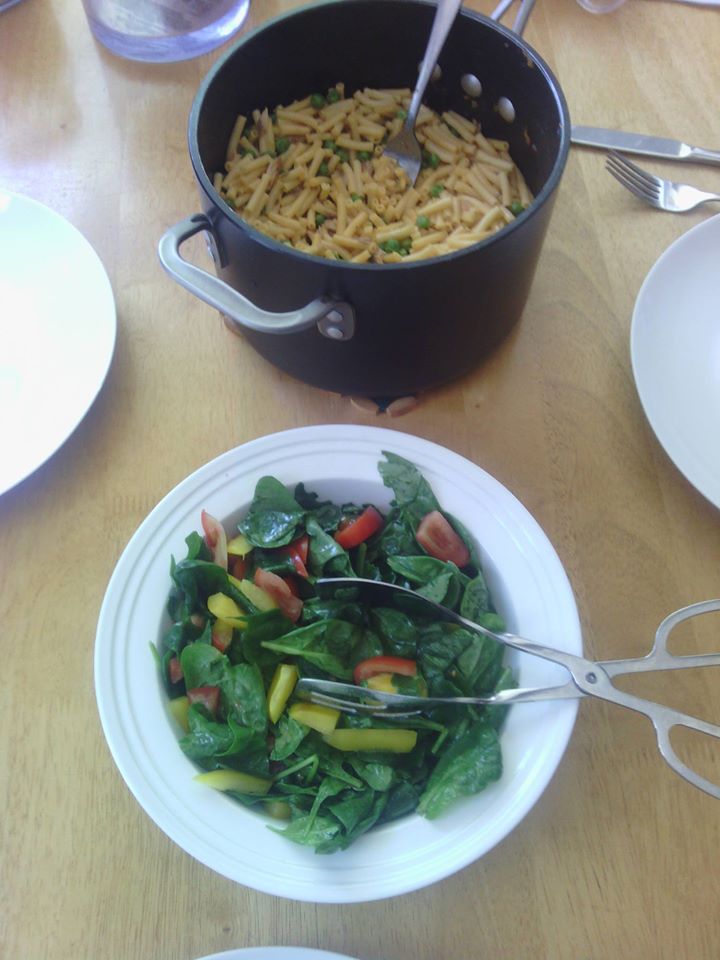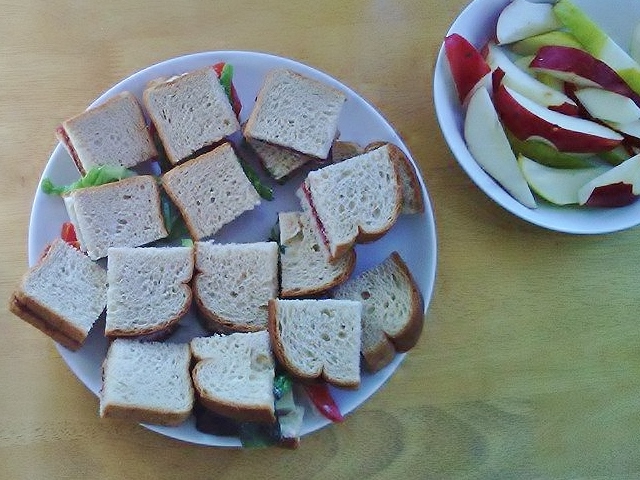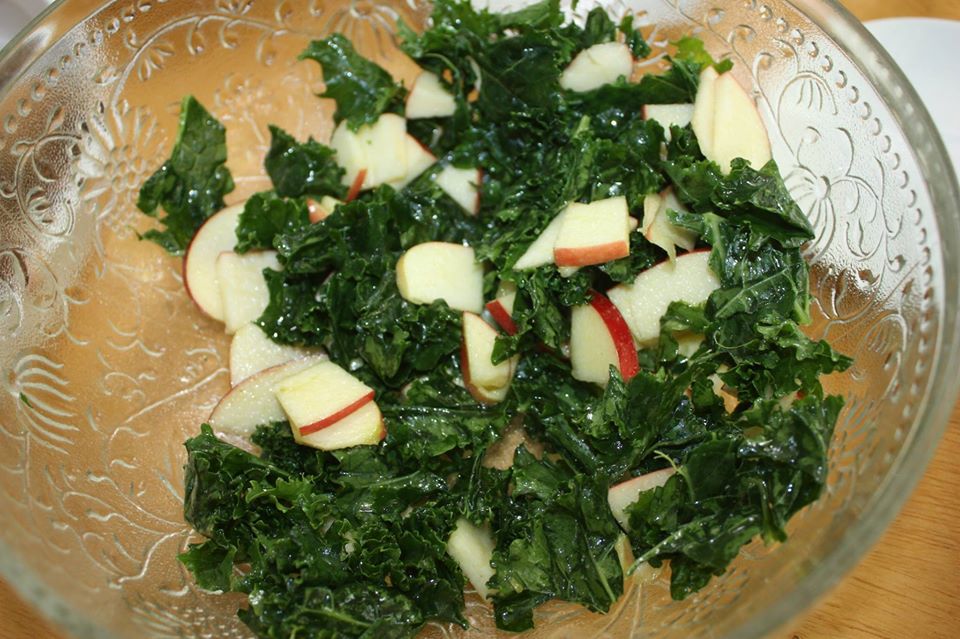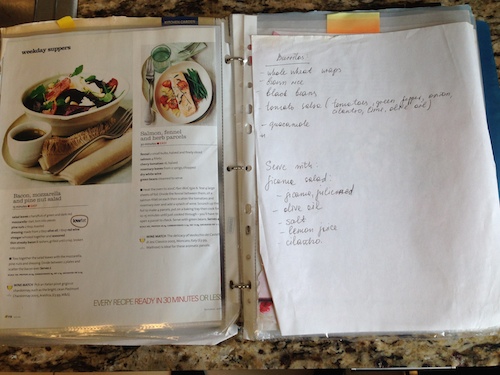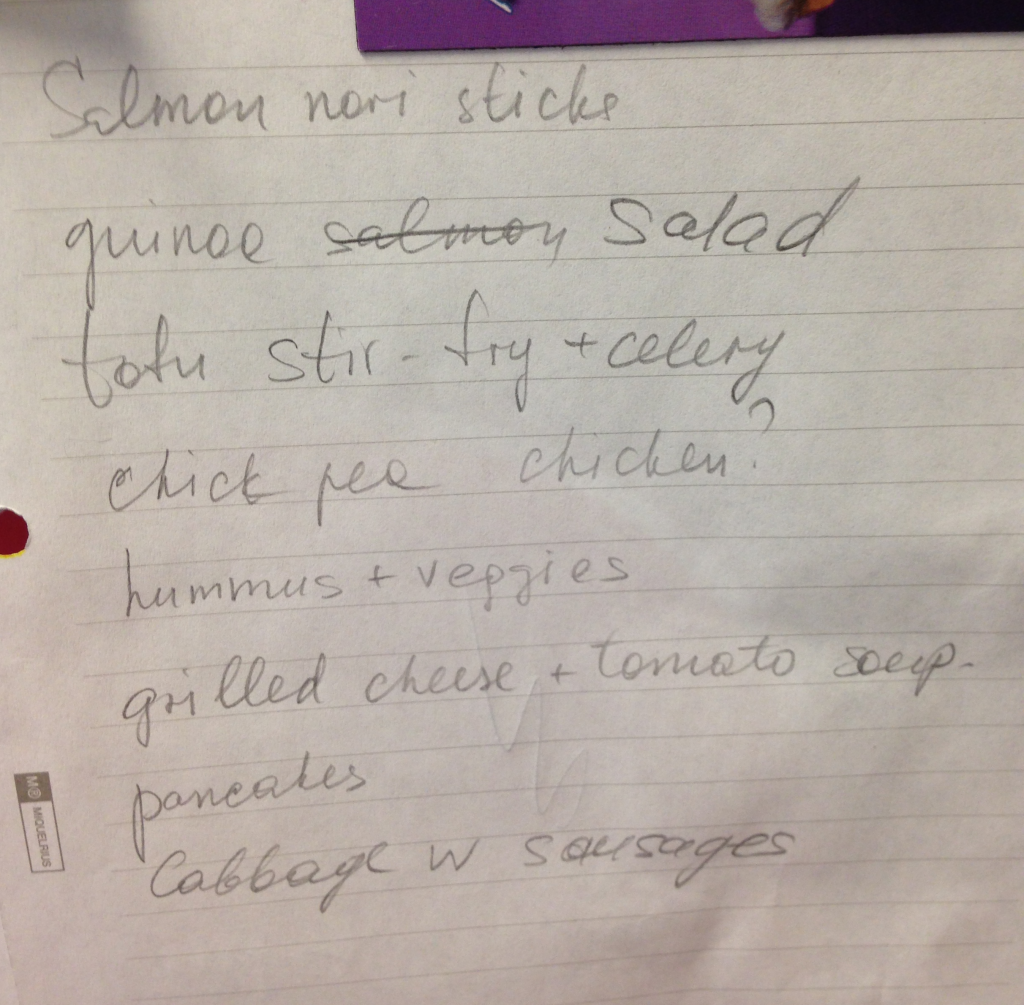In the previous lessons we encouraged you to focus on stress free family meals with you child, mealtime structure and avoiding pressure. Today we will talk about the mechanics of putting a family meal on a table. For many of us this means cooking. If cooking sounds like too much work to fit in your busy life style, we hope that the tips and tricks we share with you in this session will make it sound less intimidating. So you can get to the part where you enjoy your toddler’s company, he feels good and behaves at the table, and meals are not a draining chore.
In fact, although we will never frown upon an elaborate meal and love spending time in the kitchen, the reality is that life just gets too busy sometimes. And what was intended to be an home-cooked meal with fresh market ingredients may as well end up being a take-away pizza with some veggie crudités on the side.
So, as always, you will not find any rigid rules or Pinterest-worthy meals in this session. It is all about ways to simplify, experimenting and trying to do what works for your lifestyle.
How to plan family friendly meals
If you have not been using the feeding strategies you’ve been reading about yet, chances are your eating habits and food preferences are different from your child. And maybe greatly so! Your child may subsist on a handful of child-friendly foods that you have no interest in eating. You, on the other hand, may enjoy fresh salads and spicy ethnic food your child has no desire to even try.
Meet your child halfway
So where to start? Will you ever find recipes that work for all of you? Well, first of all, let’s keep in mind that family meals are about the family time together, more than eating. From this perspective, it is easier to give up certain food preferences and start looking for a compromise. Second, your child had only few years to learn about food and eating. You are a much more experienced diner than him. In a math class, no one would expect him to dive into multiplications before learning what 1+1 makes. So in order to help him learn to like what you serve, it makes sense to meet him halfway and gradually build up the complexity of flavors and textures in meals.
This may translate in serving meals that are not 100% to your highest standards but are great at making your child feel successful at mealtimes. So let’s say if you like a salad for lunch and your children have always been served mac&cheese and pb&j sandwiches, you may want to start serving both your salad and their mac&cheese. Below is just such a meal Adina served for lunch one day: boxed mac&cheese with smoked salmon and peas, plus a salad. If you happen to have the ingredients on hand, from-scratch mac&cheese doesn’t take a second longer than the boxed variety. It does require more post-meal clean-up because of an extra pot, etc., but the total time from start to eating is the same.
Or you can serve pb&j and maybe add another type of sandwich you like better yourself, like tuna or ham and cheese.
This sandwich plate, above, is something Adina has done before with her kids. She made both cheese-lettuce-tomato and pb&j. But so that she and the kids could share a meal of the same choices, she cut both sandwiches into quarters. The kids ate as expected: mostly PBJ, but the other option was there and they tried it without anyone cajoling them to have a bite. Also available were pear slices and milk.
A scrumptious salad that you can make to go with take out, a frozen entree, or other meal that you might consider a ‘compromise’ is this kale-apple salad. If Kale isn’t your favorite, spinach would work well too.
Add on, don’t take away
Instead of banning your child’s favorites that make you cringe, add more foods to them to create a balanced meal. For example, if your little one is fond of chicken nuggets, serve them with a more elaborate grain like quinoa and nice vegetables like grilled asparagus, elevating the meal above the typical kids’ fare but still keeping it family friendly. In other words, supplement a less than ideal food with something more nutritious. For each meal, plan to serve one item from at least 3 of the following food groups/choices: one protein choice, one-two starch choices, fruit and/or vegetable, some kind of fat, milk or other dairy and dessert (optional).
Offer spices on the side
Since kids’ palates are more sensitive, it may be challenging for them to handle a lot of spice especially if they have not gotten a lot of exposure to it before. To solve the issue, add just a little spice to the dish and serve more on the side, to add on your plate. This way, your little ones will still be able to enjoy the flavor of the dish you share with them without being overwhelmed by the heat.
Make food taste great
Although some kids love steamed veggies, many prefer some fat and seasoning with them. And although steamed fish sounds very healthy it may not look or smell appealing to your child. Small children are typically not impressed by the nutritional characteristics of food but will eat it if it tastes good to them on that particular day (remember how finicky toddlers are?). So instead if telling them that carrots help them see in the dark, roast or pan fry them with a touch of honey and butter to make them even more delicious and sprinkle some Parmesan on broccoli to help mask the slight bitterness.
If you do not cook
Even if you do not cook, you will still be able to put together a meal for your family. Here is how – keep a well stocked kitchen with a variety of fruits, vegetables, bread and dairy products to round up a take away meal you bring home. See the printout with grocery list in the Materials section of the class for inspiration.
For example, you may order a chicken with rice and beans – add some carrot sticks and grapes with bread and milk to round up the meal.
If you bought a pizza on the way home, serve it with a simple green salad (pre-washed greens in a plastic bag are a great help here), cherry tomatoes, apple slices and yogurt for dessert.
If roasted rotisserie chicken in your local supermarket looks good, serve it with a side of boiled potatoes seasoned with butter, steamed in the microwave green beans and watermelon for a quick weeknight meal.
A quick soup taco soup can be made almost entirely of canned items: saute an onion then add 1 can diced tomatoes, 1 can crushed tomatoes, 1 can black beans, 1 can pinto beans, 1 can sliced olives, 1 can corn, more water so it is as thick or thin as you prefer, taco seasoning and salt if you prefer and voila–a meal that will be cooked in less than 20 minutes! Add a bag of corn tortilla chips, plus some fruit, raw veggies or a make a salad while the soup is heating. If you have extra time you can saute some ground beef or other meat with the onion early on.
Extra or leftover vegetables can be stuffed inside of a quesadilla for a tasty meal in a jiffy. Add salsa, guacamole, canned beans, salad, fruit or whatever sounds good to round it out.
As you see, the most important thing is to sit together to a meal. The complexity and nutritional value of it are less important.
If at some point you find yourself inspired to start cooking, it is best to experiment with new recipes on a weekend or when you have more time before dinner. If you are coming home at 5.30 and your kids are expecting to be fed at 6.00pm, spending an hour in a kitchen preparing a new complicated recipe will only add stress to dinnertime and further discourage you from cooking. Instead, combine a take-out with fresh foods you have at home on that day and enjoy your time experimenting in the kitchen on Sunday.
Have a strategy
Even if you are a seasoned cook, you may need some strategy to put a meal on a table most days of the week.
For most of us, who combine child care and work, it may be as simple as putting together a list of 20 recipes that are easy for us to prepare and rotating them.
Need inspiration? Check the selection of recipes from Natalia’s blog that are easy to prepare, yummy and pretty nutritious. They can be found in the Materials section of the session.
How to store recipes
Store your recipes within reach. Some people do it on their computers and phones, others prefer the old fashioned paper method. Check out the folder with recipes Natalia has put together over the years. It contains the recipes that she tried and liked. They also got at least partial approval by her family.
If you are looking for more high tech solutions, you may want to check out the websites and platforms like AllRecipes, SousChief that allow you to store all your recipes in your account and import them from other websites and BigOven.com that will also create a shopping list and nutritional analysis for you.
How to plan meals
Despite the proliferation of meal planning websites on the internet, we are not sure they are a solution for every family. A great idea for someone stuck in a cooking rut with some time on the hands and willingness to try a new recipe every day (!), it may be too much work for most of us.
Many families tell us find that creating a weekly meal plan including tested and tried recipes was a life-saving solution for them. Again, you can do it on your computer using the websites we listed above and printing out the shopping lists or just jolt down the meals you have in mind before or after you go shopping on a piece of paper to display somewhere in your kitchen. See an example of how Natalia does it in a just couple of minutes.
If committing to a certain recipe each day of the week is not feasible for you, a more doable strategy could be putting together a loose plan for what you plan to cook every week and adjust it as needed as the week progresses. For example, your “meal plan” may look like this:
Monday: Pasta dish
Tuesday: Taco night
Wednesday: Make your own salad night
Thursday: Bean soup
Friday: Fish dish
Saturday: Leftovers night
Sunday: Take out or restaurant
This menu will provide tons of variety and enough flexibility to combine the main dish with the veggies you have on hand or cook with the protein available to you that day. For example, Natalia always tries to shop for the freshest fresh fish or discounted frozen and then prepares it that night using one of the simple recipes she stores in her binder. To make her job easier, she keeps a well stocked spices cabinet so she can switch from one recipe to another without having to do another shopping trip.
Adina also prefers to buy what looks freshest and/or is on sale and then improvises with the ingredients she has at home. Although planning meals for a week is not her thing, she has a pretty good idea what she will be serving for the next two or three meals.
As always the most important part of family meals is the family. What we sometimes see get in the way of eating together is setting the bar too high when it comes to food. Consider your expectations of the food part of the family meal. Are they achievable and reasonable? Do they make preparing a meal a burden? If so consider lowering the bar until or simplifying things. The best meal strategy for your family is the one that allows the one in charge of getting food on the table enough flexibility to make it worth it. Remember that the time together, sharing food in a pleasant atmosphere will do more to help your child learn to like new foods than worrying excessively about putting together a perfect meal.
Here are a couple of video where Natalia is sharing the strategies she uses to prepare family meals. She is a big fan of simple, no frills approaches and, although not all her meals are Pinterest – worthy, she is able to consistently provide them to her family on an everyday basis.
Video 1: Natalia’s pantry
Video 2: Natalia’s meal planning strategy
Coming Up Next: Wrap up and final questions
Assignment/Discussion: How do you decide what to serve your family? Do you like to plan ahead for several days or a couple of weeks, wing it, or something in between? What hasn’t worked in the past and what might you try that you haven’t yet tried? Does the work sound do-able or overly burdensome?
